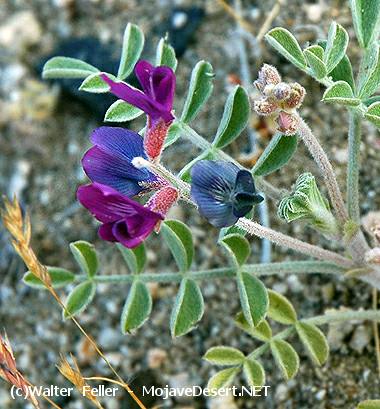Desert Lupine
Lupinus shockleyiHeight: Typically 6 to 24 inches tall
Habitat: Sandy or gravelly soils, desert flats, washes, and open slopes
Elevation: Found from around 2,000 to 6,000 feet
Range: Native to the Mojave Desert and surrounding arid regions, especially in California, Nevada, and parts of Arizona
Description:
Desert Lupine is a spring-blooming annual or short-lived perennial with soft, hairy stems and divided, palm-shaped leaves. It produces tall spikes of pea-shaped flowers, usually blue to violet, sometimes with white or yellow spots. The plant often grows in scattered patches, lighting up the desert after winter rains.
Uses:
While not widely used for food or medicine, it plays an important role in desert ecosystems—fixing nitrogen in the soil and feeding native bees and butterflies. Some lupines can be toxic if ingested, so it's more admired than used.
Note:
Delicate but tough, Desert Lupine brings color and life to dry places. It’s one of the highlights of a desert spring, especially during good bloom years.
